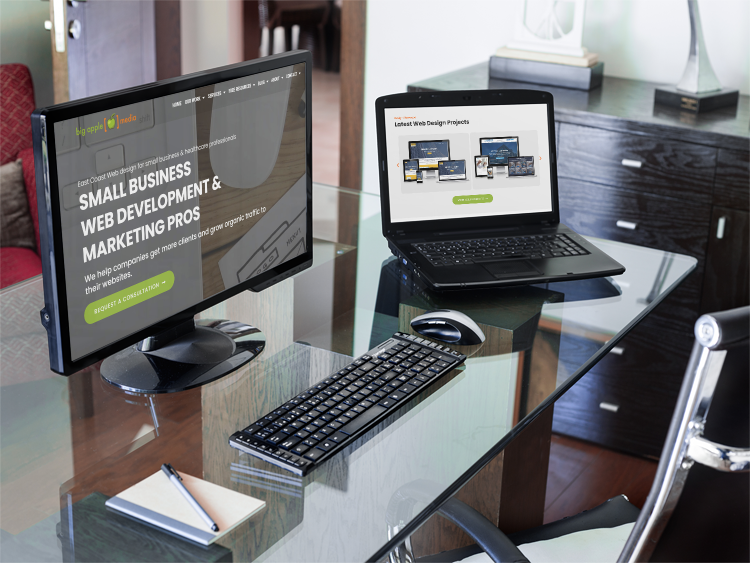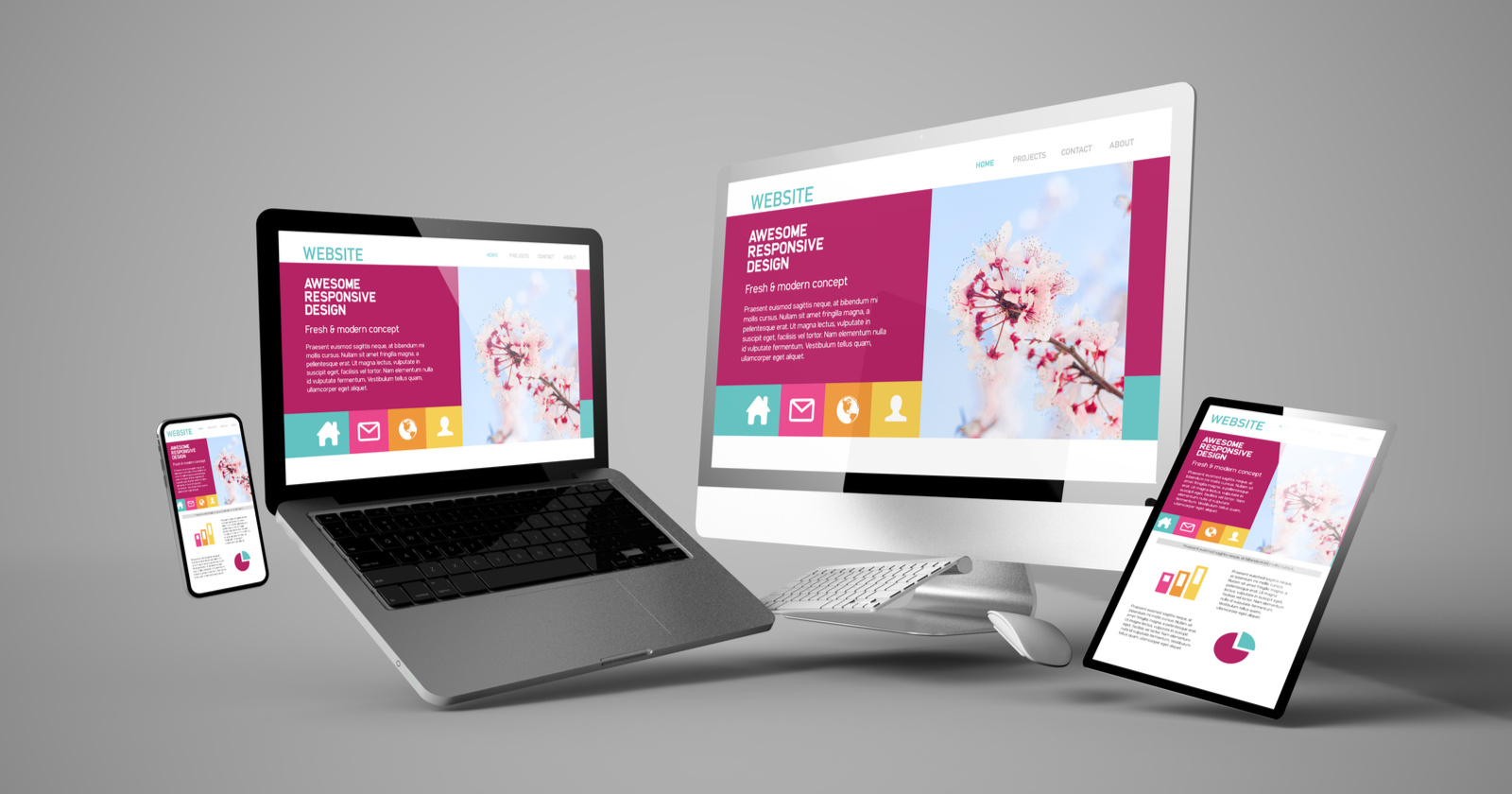Learn about creative solutions for your business with holistic web design.
Learn about creative solutions for your business with holistic web design.
Blog Article
Develop a Balanced Online Experience With Holistic Website Design
In today's electronic landscape, producing a well balanced online experience via alternative web layout is essential for meeting the diverse needs of individuals. By focusing on availability and aligning content technique with individual choices, organizations can considerably boost interaction.
Understanding Alternative Internet Layout
What does it mean to adopt an alternative approach to web style? An all natural approach stresses the combination of various aspects to create a cohesive on-line experience. This methodology takes into consideration not just aesthetic facets but also capability, usability, and the psychological impact of the website on its customers. By seeing a site as an interconnected ecological community, developers can ensure that every part-- visual design, material, navigation, and interactivity-- functions harmoniously to meet individual needs.

Integrating a holistic perspective entails understanding the target market and their details needs, preferences, and habits. It needs an evaluation of exactly how customers interact with various aspects of the site and exactly how these interactions affect their total experience. This strategy additionally considers the more comprehensive context in which the website operates, consisting of brand name identity, advertising and marketing methods, and competitive landscape.
Inevitably, an alternative technique to website design results in an extra engaging and efficient online presence. By focusing on the customer journey and promoting a smooth experience throughout all touchpoints, designers can produce internet sites that not only record attention however likewise encourage sustained interaction and satisfaction. This extensive approach advertises long-lasting success and fosters brand loyalty.
Trick Concepts of Individual Experience

One necessary principle is functionality, which stresses the relevance of straightforward navigating and clear functionality. Websites must be simple to navigate, enabling users to find info quickly. This is very closely connected to consistency, where style aspects, such as switches and food selections, need to stay uniform throughout the site to improve experience and ease of use.
Another considerable concept is feedback, making sure that customers are informed concerning their communications. Whether through visual hints or notices, feedback enhances a sense of control and complete satisfaction. Additionally, the concept of power structure determines that information must be arranged practically, leading users with material effectively.
Lastly, psychological design plays a crucial function in UX. By stimulating positive emotions via looks and interactions, developers can create memorable experiences that foster user loyalty - website development consulting. By adhering to these principles, web designers can develop alternative experiences that reverberate with customers and fulfill their objectives
Value of Accessibility
Accessibility is a vital facet of web style that makes sure all customers, despite their abilities or impairments, can interact with electronic content efficiently. By focusing on ease of access, web developers develop comprehensive environments that accommodate diverse customer needs, enhancing general individual experience.
An accessible site complies with developed guidelines, such as the Web Material Ease Of Access Standards (WCAG), which suggest methods like offering a knockout post text options for non-text web content, making certain adequate shade comparison, and allowing key-board navigation. These methods not just offer users with disabilities, such as visual or acoustic impairments, but additionally profit other individual groups, consisting of those with situational constraints or older grownups.
Additionally, the importance of access prolongs beyond ethical factors to consider; it also impacts organization outcomes. An inclusive internet site can reach a more comprehensive audience, inevitably leading to raised engagement and conversions. Additionally, access compliance minimizes the danger of legal repercussions connected to discrimination.

Integrating Web Content Technique
Creating an inclusive digital environment naturally results in the necessity of a robust content method that straightens with customer needs. An efficient web content approach functions as the backbone of holistic website design, guaranteeing that information is not just available but likewise interesting and appropriate. It calls for a deep understanding of the target audience, including their choices, actions, and possible barriers to access.
To incorporate a web content approach properly, organizations have to prioritize user-centric web content production. This can be achieved with thorough target market research, which educates the types of content that will certainly resonate with users. Furthermore, web content needs to be structured website here realistically, utilizing clear headings, bullet factors, and succinct language to improve readability.
Routine audits of material efficiency will help in refining strategies, guaranteeing the material continues to be fresh and aligned with user expectations. By prioritizing a cohesive content technique, organizations can produce a balanced online experience that cultivates engagement and availability for all users.
Determining Success and Interaction
While a well-executed material technique develops the foundation of holistic website design, gauging success and interaction is important for assessing its performance and directing future renovations. Key performance indicators (KPIs) such as page views, bounce prices, and average session period give quantitative insights into user actions. These metrics highlight which web content reverberates most with individuals and where possible rubbing points may exist.
In addition, qualitative procedures, such as individual responses and surveys, can provide much deeper understandings right into customer fulfillment and involvement levels. Tracking social media interactions and conversion rates also aids evaluate the performance of material in driving wanted actions, whether that be purchases, sign-ups, or information demands.
Making use of tools like Google Analytics, heatmaps, and A/B testing can improve understanding of user communication patterns and choices. This data enables internet designers and content planners to repeat on their designs, making sure that the on the internet experience stays user-centered and straightened with business objectives.
Final Thought
By focusing on customer requirements and availability, designers can create interconnected environments that view website enhance interaction and contentment. A well-aligned web content technique additionally adds to a natural individual experience, while consistent comments devices are essential for cultivating commitment.
Report this page